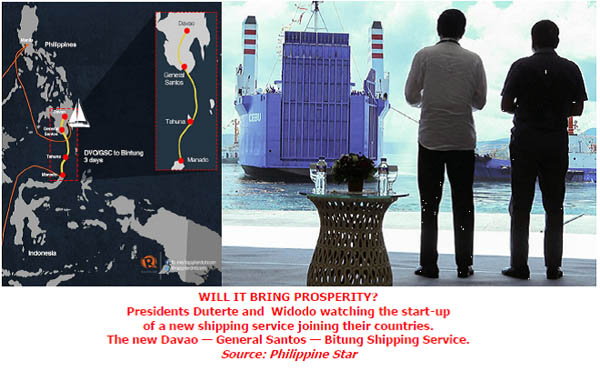
The trade between countries making up the Association of South-East Asian Nations (ASEAN) should represent the fourth largest trading bloc by 2050, with their economies then adding to USD 9 trillion annual Gross Domestic Product.
The ASEAN countries (Brunei, Cambodia, Indonesia, Laos, Malaysia, Myanmar, Philippines, Singapore, Thailand and Vietnam) are geographically close but very diverse politically, culturally, and organizationally. They do not have the cohesion that a group such as the European Union has, and ASEAN is established on the basis of not interfering in each others affairs. This diversity may make the task of trade expansion more difficult.
According to the World Trade Organization, the average tariff level of intra-ASEAN trade is 4 percent. This is quite small compared to the tariff levels being negotiated for some industry sectors under other multilateral or bilateral trade agreements in earlier periods. However, to ensure the benefits of intra-ASEAN trade, there will be a need to streamline the non-tariff barriers, and these are trickier.
Further, there will be a need to reduce the transport costs of trade among close neighbours, as well as to streamline the goods handling and the customs treatments of those exports/imports.
Reducing tariff rates between countries is relatively easy if the political will exists. Streamlining the customs procedures is relatively easy if bureaucrats get off their back-sides and get motivated. But the transport linkages are complex and slow and are based on a multitude of aspects, many of which cannot be easily altered by politicians or bureaucrats: private parties developing contacts and negotiating contracts, languages, contract law, product standards, marketing, labelling, transporting. In this regard shipping lines and services and the availability of port infrastructure and facilities are all important.
On 30 April, the President of the Philippines, Mr Duterte, and the President of Indonesia, Mr Widodo, opened a new shipping route linking the two countries. The chairman of the Mindanao Development Authority, Datu Abul Khayr Alonto, said that the Philippines Government considers the route as a major stepping stone of the initiative called the Brunei-Indonesia-Malaysia-Philippines-East ASEAN Growth Area.
The route will be serviced by a Roll-on / Roll-off ferry owned by the Asian Marine Transport Corporation and having a capacity of 500 containers (TEUs). The trip will take 3 days, replacing the minimum 3 weeks required for shipping between these ports previously, and reducing the cost of shipping a container (TEU) from USD 2,200 to USD 700.
Likely goods using the service from the Philippines will be animal feeds, fertilizer, construction materials, ice cream products, poultry, fresh fruits and synthetics; and, from Indonesia will be matured coconut, copra, corn, feed ingredients, lumber, cement, high value crops and vegetables.
The push for new trade between countries in ASEAN comes at a time of trade exhaustion in the electorates of many developed countries. President Trump cancelled the participation of the USA in the Trans Pacific Partnership (TPP), an Asian-centric agreement which would have cemented the USA in the centre of forthcoming trade-led growth in Asia. Indonesia was due to be a TPP member and would have benefited from this; the Philippines had not sought membership, but was likely to be a late participant, and would have also reaped benefits.
Well, over forthcoming decades, the big growth potential for international trade lies in Asia. The economic and strategic benefits that would have accrued to Trump’s America will likely be picked up by China. China’s emphasis will be different, with a noticeable slant towards benefitting state-owned organizations. The power of the World Trade Organization, which is the ‘policeman’ of the minutiae of trade disputes and rulings, will be dented by Trump’s decision to weaken the US presence in Asia.
As these global pressures on trade design and growth weaken, Asian economies will see reduced scope to export to developed countries. And so there will be a greater imperative to grow trade in the Asian region, which means amongst developing countries themselves. Therefore, the focus of one important aspect of trade, non-trade barriers, will require greater rigour by ASEAN members to ensure that these do not undermine the fancy ASEAN governments’ resolutions and the reduction in the headline-grabbing tariff rates. Non-tariff barriers include: licenses, quotas, embargoes and the standards for goods. Non-trade barriers have the strong potential to stymie the aim of intra-ASEAN trade expansion. In his keynote address during the ‘Prosperity for All’ Summit last week, Malaysian Prime Minister, Mr Najib Razak, said that non-tariff barriers in ASEAN rose from 1,634 measures to 5,975 measures between 2000 and 2015. This is dangerous.
The new Davos - General Santos - Bintung shipping service will provide the modern means of updating a trade route which has been used for centuries. However, whether it thrives and expands trade between the Philippines and Indonesia may depend on the success or failure of the machinations of special-interest groups to twist the two governments to allowing the retention of non-trade barriers to trade.
Mike B. Bradshaw has been an officer of the Treasury, Canberra, an investment banker, and a consultant in Europe, the USA and Asia. He now works on project financing.

